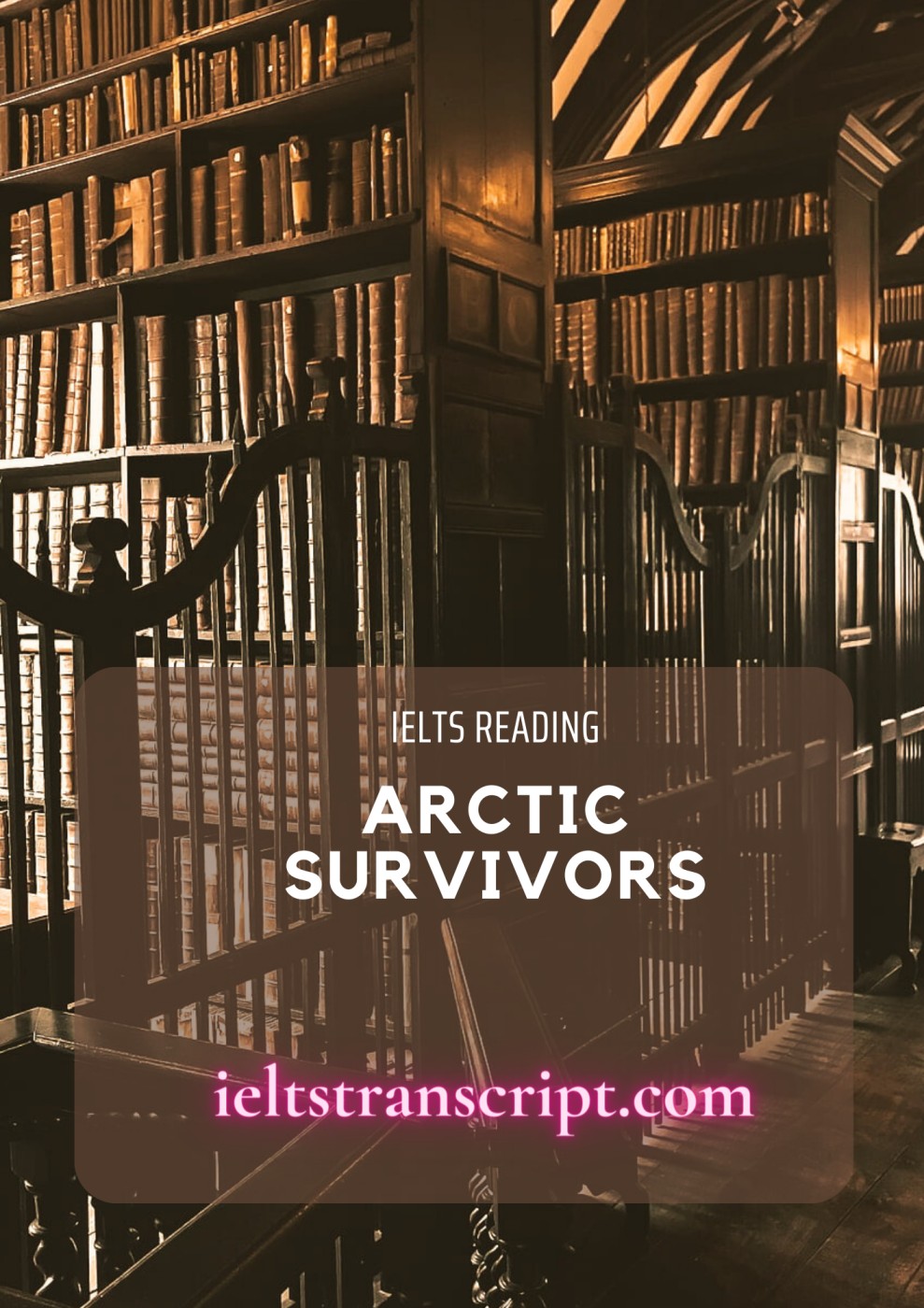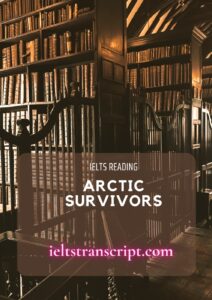- Đối với sản phẩm có giá: Sau khi chúng tôi ghi nhận thông tin đã thanh toán sản phẩm của bạn, sản phẩm sẽ được mở khóa và bạn có thể xem trực tiếp và tải tài liệu sản phẩm.
- Đối với thành viên trả phí: Bạn có thể mua và thanh toán sản phẩm với giá 0đ để tải tài liệu sản phẩm.
- Bạn có thể liên hệ với chúng tôi để được hỗ trợ mở khóa sản phẩm sớm nhất.
Arctic Survivors
- Chúng tôi chấp nhận các phương thức thanh toán sau đây: Thẻ tín dụng, thẻ ghi nợ, PayPal, chuyển khoản ngân hàng và tiền mặt.
Chúng tôi sẽ không thu thêm phí cho bất kỳ hình thức thanh toán nào.
- Nếu bạn gặp vấn đề về sản phẩm của chúng tôi trong thời gian sử dụng, vui lòng liên hệ với chúng tôi để được hỗ trợ xử lý sớm nhất nhé.
Xem trước mẫu
Arctic Survivors
The Arctic is an area located at the northernmost part of the Earth and includes the Arctic Ocean, Canada, Russia, Greenland, the United States, Norway, Sweden, Finland and Iceland. It consists of an ice-covered ocean, surrounded by treeless permafrost. The area can be defined as north of the Arctic Circle, the approximate limit of the midnight sun and the polar night. The average temperature in July, which is the warmest month, is below 10°C. Colder summer temperatures cause the size, abundance, productivity and variety of plants to decrease. Trees cannot grow in the Arctic, but in its warmest parts, shrubs are common and can reach 2 metres in height.
A thick blanket of snow lies several feet deep all over the ground. The sun appears for only a few brief hours each day before sinking below the horizon as blackness cloaks the land. As it vanishes, a bitter chill tightens its grip. The Arctic is not a place to be in the throes of winter; it is hostile to almost all animal life. Amphibians would freeze solid here. Nor can reptiles withstand the extreme cold. And yet there are animals here, animals that exhibit a remarkable tolerance of the most inhospitable conditions on the planet.
Less than half a metre beneath the surface of the snow, a furry white creature, no bigger than a hamster, scurries along a tunnel. It is a collared lemming. It and other members of its family have excavated a complex home within the snow field, but it costs the lemmings a great deal to survive here. They pay by using some of their precious and scarce food supply to generate heat within their bodies so that their biochemical processes can continue to function efficiently. But in order to keep fuel costs to a minimum, they must conserve as much energy as they can. A thick insulating coat of fine fur covering all but the lemmings’ eyes achieves this. Fur is the life preserver of the Arctic.
Only one class of animals has fur – the mammals. Fur is comprised of dense layers of hair follicles. Hair is composed of a substance called keratin. It grows constantly, its roots embedded in the skin and surrounded by nerve fibres so that its owner can sense any movement of the hair. It is this precious fur that gives land mammals the edge necessary to survive the harsh Arctic winter. Without it, wolves, lemmings and arctic foxes alike would surely perish.
The insulation provided by fur comes not from the fur itself, but largely from the layer of air trapped within the fur. Air is an extremely effective insulator, which is the same as saying it is a poor conductor, i.e. it has a very limited ability to conduct heat away from a warm surface. Studies reveal that if a layer of air of about five centimetres could be held in place close to the skin, it would provide the same insulation as does the impressively dense winter coat of the arctic fox. If an arctic fox or wolf is exposed to an air temperature of about minus ten degrees, the temperature near the tips of the fur will match the air temperature, but at the surface of the skin it will be closer to thirty degrees. This represents a temperature difference of around forty degrees. Such effective insulation is only made possible by the layer of trapped air contained within the long, fine and densely packed fur.
But Arctic mammals have more in their arsenal than just fur to protect them from the elements. Unlike amphibians, reptiles and other classes of animals, they are endotherms, meaning they can generate their own body heat. This is another of the defining characteristics of mammals. It is the mammalian ability to generate heat internally that enables the arctic fox or the lemming to remain warm and active in very cold conditions. Generating heat internally, Arctic mammals can regulate their body temperature independent of external conditions; this is known as thermoregulation. When Arctic mammals are cold, they raise their metabolic rate and produce more heat. When they are warm, the reverse
...Để xem được đầy đủ nội dung và tải dữ liệu, bạn phải trở thành thành viên của chúng tôi và trả phí cho tài liệu (nếu có)











